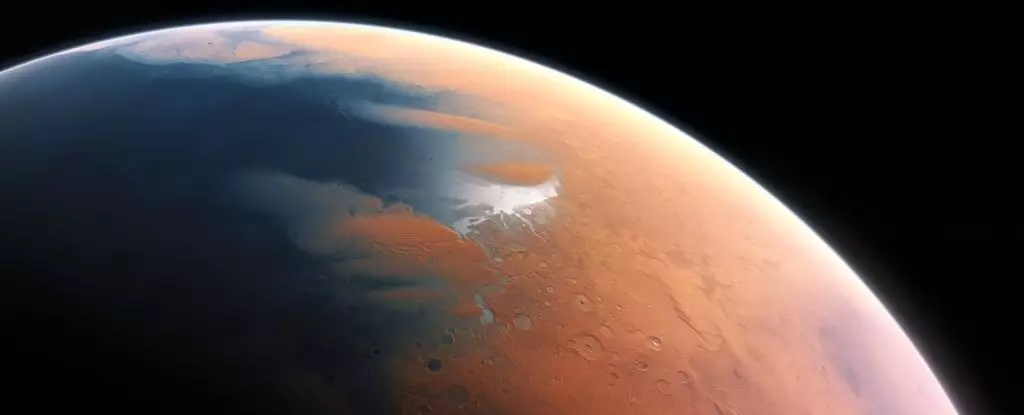Mars, our dry and dusty neighbor, holds a mysterious past that is closely intertwined with the presence of water. As rovers traverse the surface of the red planet, the remnants of ancient dry lake beds and deltas provide strong evidence that Mars was once abundant with water. However, the water that once filled the Martian landscape has seemingly disappeared, leaving behind only traces of ice on the surface. The latest analysis of seismic data collected by the Mars InSight lander has shed light on the existence of vast reservoirs of liquid water hidden deep within Mars, presenting a fascinating piece of the puzzle in understanding the planet’s aquatic history.
Uncovering Hidden Reservoirs
The Mars InSight lander, during its operational period from November 2018 to December 2022, utilized seismic data to reveal the presence of underground reservoirs of liquid water on Mars. By analyzing the behavior of acoustic waves generated by seismic activity within the planet, scientists have identified a layer of fractured igneous rock deep below the Martian surface, possibly containing liquid water. This layer, composed of materials like granite, is situated at depths ranging from 11.5 to 20 kilometers, making it inaccessible to current exploration technologies. Despite the inaccessibility of these reservoirs, they provide valuable insights into Mars’ water cycle and hint at the planet’s capacity to retain significant amounts of water over time.
The discovery of hidden liquid water reservoirs on Mars has sparked discussions about the planet’s potential habitability, both in the past and present. Geophysicists like Michael Manga from the University of California, Berkeley, emphasize the importance of liquid water for sustaining life as we know it. While no direct evidence of life on Mars has been found, the presence of these underground reservoirs opens up the possibility of habitable environments deep within the planet. Similar environments on Earth, such as deep mines and ocean floors, host diverse forms of life, prompting speculation about the potential for similar life-supporting conditions on Mars. Understanding the Martian water cycle and the distribution of water reserves is crucial for unraveling the mysteries of the planet’s past climate and its potential for supporting life.
Despite the intriguing findings regarding Mars’ hidden water reserves, uncertainties remain about the extent and distribution of these reservoirs. Further observations and analysis of Mars’ crust are necessary to confirm the presence of widespread liquid water deposits below the surface. Moreover, the limitations of current exploration technologies highlight the need for advanced instruments and methods to penetrate deeper into the Martian subsurface. The quest to unveil the secrets of Mars’ water cycle and its implications for habitability requires a collaborative effort involving innovative research approaches and cutting-edge technology.
The discovery of hidden liquid water reservoirs on Mars opens up new avenues for exploration and research into the planet’s enigmatic past. While the challenges of accessing these reservoirs remain formidable, the implications for understanding Mars’ water cycle and potential habitability are profound. As scientific inquiry continues to unravel the mysteries of our neighboring planet, the quest for knowledge about Mars’ hidden water reserves represents a crucial step towards unlocking the secrets of our solar system.


Leave a Reply